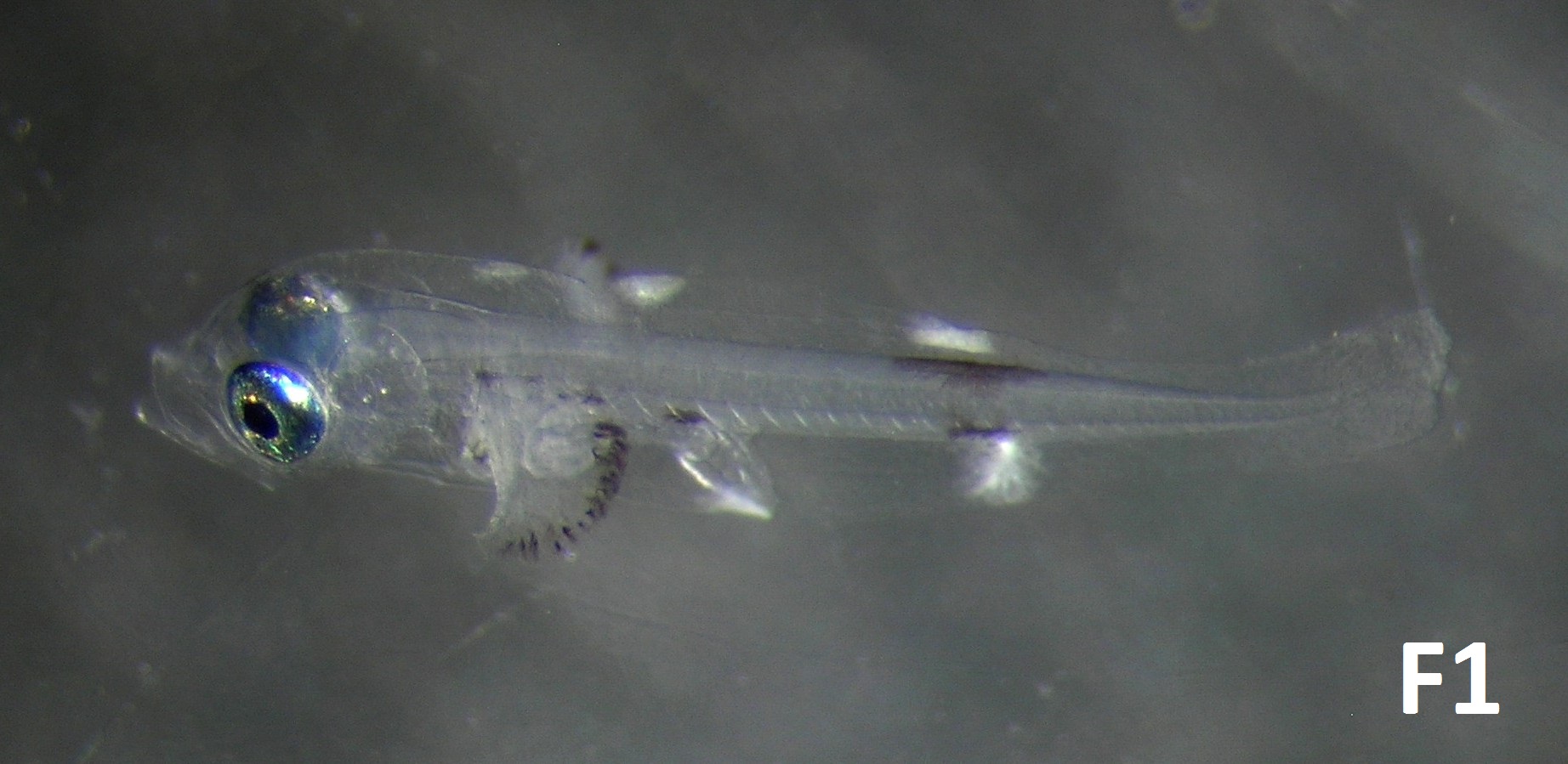Grammistidae: L II B3
Aulacocephalus temmincki Bleeker, 1857.
Goldribbon soapfish







|
Egg diameter in µm |
Number of oil globules |
Diameter of oil globule in µm |
Yolk texture |
Perivitelline space |
Position of oil globule at hatch |
Gut length at eye- pigment stage |
Myomeres |
|
1090-1200 |
1 |
170-205 |
clear |
narrow |
stern |
52% of NL |
26 |
Egg: These eggs were sometimes seen fresh, indicating early morning spawning, but others were taken at a more advanced stage of development, which suggest evening spawning, so perhaps they do both. The oil globule is often greenish amber, and quite small for the size of egg (A). At 24 hours incubation, no pigment is visible on the embryo. The oil globule may be clear on occasion. In the late egg, yellow pigment on the yolk, and in the pattern of the embryo (B), can be seen, but no black pigment. Incubation is about 40 hours (26°C).
Larva: The yellow pigment pattern of the early larva (B & C) is largely retained in the later, 5 day larva (F), which also develops a black edge to the pectoral fins. The larvae are very slimy, and tend to curl into a ball when molested in the hatching bowl. B: NH, C: 2 days, D: 4 days, E&F: 5 days (26°C).
This larva has a general look of a serranid, such as Acanthistius (FIIIA1), and other Anthiinae (KIIIC1, KIIIC1A, KIIIC2), and Epinephelinae (LIIIB4, LIIID2), with big splashes of white in the finfolds at the pigmented-eye larval stage. Care is also needed to avoid confusion with Luvaris (LIIA4B).
Various attempts to rear this larva were unsuccessful. Four larval barcode sequences match 6 adult Aulacocephalus temmincki, collected locally (BOLD). Although quite secretive. adults are often seen in small caves at 30-50m off Park Rynie.


| Linked samples | Offshore | Inshore |
| Eggs | 269 | 55 |
| Hits | 105 | 33 |
This egg was fairly common off Park Rynie, with a well defined summer spawning season (blue graph), and a steady presence over the past 25 years (white graph). The egg was not seen in the DHM samples. The Park Rynie linked samples had more eggs offshore (83%), indicating they are spawning a similar distance offshore, to the geelbek (LIIA6), on about the 50m contour. See Section 7.3 and Table 1 of the Introductory Notes, for more information on the linked samples.